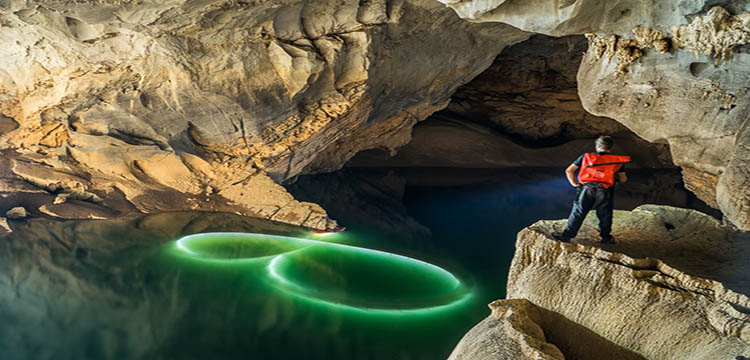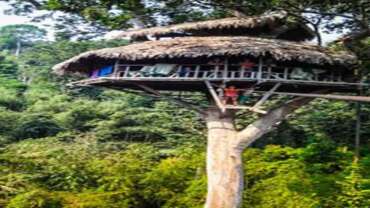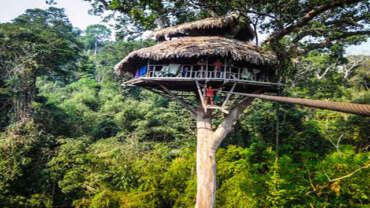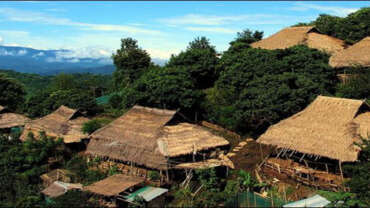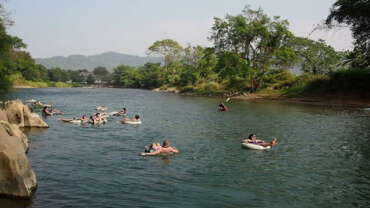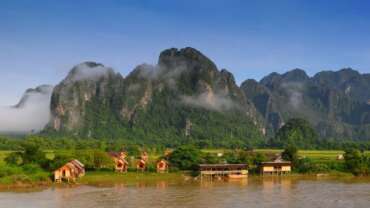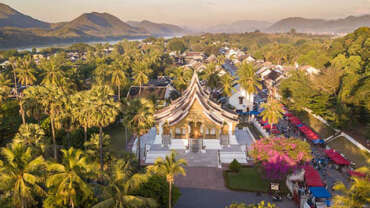Caving in Laos!
Exploring the caves of Laos provides overwhelming experience. Discovering huge underground chambers decorated with stalactites, stalagmites and the delicate helectites (speleothem found in limestone caves). Laos offers various cave exploring adventures as well as the most extensive limestone cave system in Asia.
Kong Lor Cave is the largest and grandest cave in the country. It is a stunning 7.5 km limestone tunnel through the cliff. The caves measures about 70-80 m wide in some places while the main cavern reaches up to 100 m high. It attaches two valley separated by a mountain range while the Nam Hin Boun river flows 7 km through the darkness of Tham Kong Lor Cave. An hour boat trip inside the caves will lead to vast stalactites hanging from the roof and other spectacular limestone formation. A strong torchlight is needed as you travel along the dark eerie enormous cave.
The second longest cave in the country and the largest cave known in the northern Laos is Tham Chom Ong Cave system. The 13.4 km long cave system is situated 45 km from Oudomxay town near the Khmu Lu Village of Ban Chom Ong Thai. The cave system stretches along 4 km long mountain ridge and has a parallel running and interconnecting fossil passage above the cave river for 1600 m and a river passage. The huge passage has 20 m to 35 m wide chambers that contain many delicate limestone formations.
The great cave of Tham Khoun Xe Cave otherwise known as Xe Bang Fai River Cave is an underground segment of Xe Bang Fai River situated in the remote corner of Khammouane Province of Laos. In 2008, Tham Khoun Xe cave was re-explored by French and North American team. Based on the expedition report Tham Khoun Xe Cave is considered to be one of the largest sustained river passages in the world with enormous rooms decorated with highly impressive structures. The cave has 7 km active river passage and 2.7 km fossil passage.
Positioned 25 km from Luang Prabang high above the Mekong River is Pak Ou Caves. The famous Buddha caves are filled with Buddha images with a number of standing Buddha images of Luang Prabang. The cave has two levels- the first entrance is clearly visible from the river while the upper cave can be reached after climbing some stairs. Within Tham Thum, the upper cave entrance is a big Buddha guarding the dark caves. Pak Ou Caves were altered into Buddhist temple in 15th century and used to hold Buddha images that can no longer venerated in temples cause of the damages.
Vieng Xai is located in Houphan Province of the limestone region of North-Easter Laos. There are hundreds of caves within the area of Vieng Xai, these caves served as shelter for the Phathet Lao, communist revolutionaries during the Secret War. The underground complex was built using soft limestone to dig almost 200 m into the rock. The caves were equipped with airtight evacuation chambers to protect people against chemical weapons; there were also hospital, theater and even bakery.
Seven of these caves are opened to the public for exploration on a large intact revolutionary base. These caves were used as the headquarters of the leaders of the Pathet Lao some of the caves are known as the Defense Minister Cave, the Soldier’s Cave and the Royal Pad.



